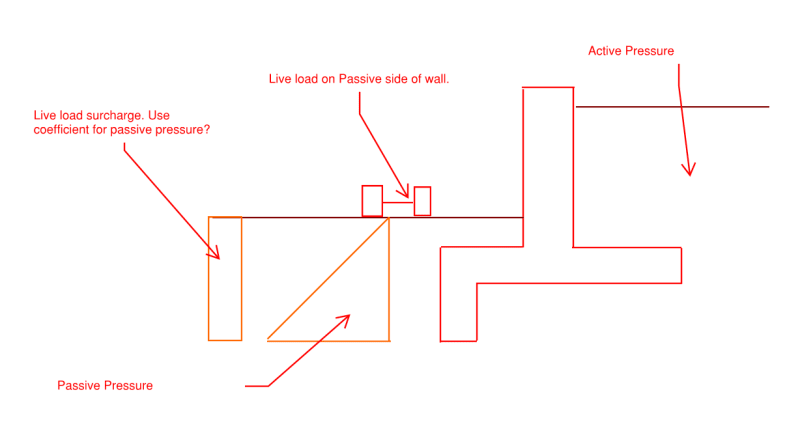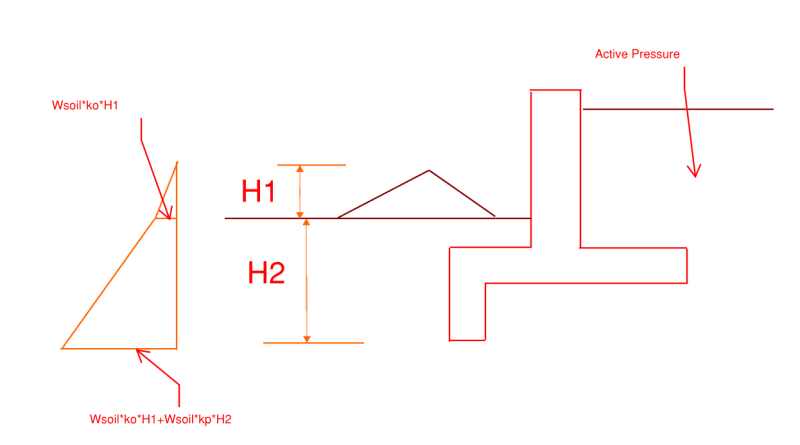Hi Everyone,
I'm not sure which coefficient of lateral earth pressure to use when I have a situation like the one shown below.

When you have a live load near a wall, we have to include a horizontal live load surcharge on the wall. If I had the case like shown above where the live load is on the passive side of the wall, would I multiply the surcharge force by the at-rest or the passive pressure coefficient?
Also, what about the situation shown below. Would the lateral pressure be as shown below where the mound of soil above that is not being pushed on by the wall would act with an at-rest coefficient, and the soil below would act with the passive coefficient.

Thanks.
I'm not sure which coefficient of lateral earth pressure to use when I have a situation like the one shown below.

When you have a live load near a wall, we have to include a horizontal live load surcharge on the wall. If I had the case like shown above where the live load is on the passive side of the wall, would I multiply the surcharge force by the at-rest or the passive pressure coefficient?
Also, what about the situation shown below. Would the lateral pressure be as shown below where the mound of soil above that is not being pushed on by the wall would act with an at-rest coefficient, and the soil below would act with the passive coefficient.

Thanks.
